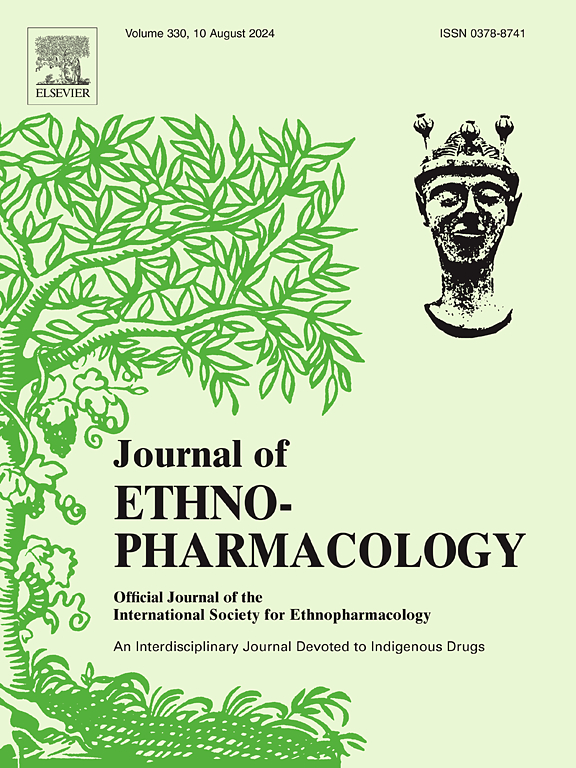Lianhua qingke alleviates cigarette smoke induced cellular senescence in COPD mice by regulating the Sp1/SIRT1/HIF-1α pathway
IF 4.8
2区 医学
Q1 CHEMISTRY, MEDICINAL
引用次数: 0
Abstract
Ethnopharmacological relevance
Lianhua Qingke (LHQK) has been utilized as a complementary therapy for respiratory diseases like tracheobronchitis and acute exacerbations of COPD in China. However, its therapeutic efficacy and underlying mechanisms for COPD remain elusive.
Aim of the study
This study aimed to elucidate the mechanisms underlying the effects of LHQK on COPD, focusing on its anti-senescence properties.
Materials and methods
The therapeutic effects of LHQK were assessed by chronic cigarette smoke exposure induced COPD mice model. Lung function, histopathology investigation, cytokines detection and bio-molecular analysis were conducted to assess the impact of LHQK on pulmonary inflammation, mucin secretion, and cellular senescence of cigarette smoke (CS)-induced COPD mice.
Results
A comprehensive analysis identified a total of 41 compounds as the key compounds of LHQK. Oral administration of LHQK markedly reversed the decline in pulmonary function, suppressed inflammation and mucus secretion, mitigated emphysema, and histopathology damage in lungs of COPD mice. In addition, LHQK attenuated secretory phenotype associated with cellular senescence in pulmonary and circulatory, and reduced the senescence-associated markers levels, such as SA-β-gal, miR-125a-5p, p21, p27 and p53. Network pharmacology and molecular assays indicated that LHQK enhanced Sp1 and SIRT1 expression, resulting to repression of HIF-1α, finally alleviating cellular senescence in COPD mice.
Conclusions
LHQK demonstrates potential as a complementary therapy for COPD, attenuating CS-triggered emphysema and pulmonary inflammation by targeting cellular senescence processes and modulation of Sp1/SIRT1/HIF-1α pathway.

求助全文
约1分钟内获得全文
求助全文
来源期刊

Journal of ethnopharmacology
医学-全科医学与补充医学
CiteScore
10.30
自引率
5.60%
发文量
967
审稿时长
77 days
期刊介绍:
The Journal of Ethnopharmacology is dedicated to the exchange of information and understandings about people''s use of plants, fungi, animals, microorganisms and minerals and their biological and pharmacological effects based on the principles established through international conventions. Early people confronted with illness and disease, discovered a wealth of useful therapeutic agents in the plant and animal kingdoms. The empirical knowledge of these medicinal substances and their toxic potential was passed on by oral tradition and sometimes recorded in herbals and other texts on materia medica. Many valuable drugs of today (e.g., atropine, ephedrine, tubocurarine, digoxin, reserpine) came into use through the study of indigenous remedies. Chemists continue to use plant-derived drugs (e.g., morphine, taxol, physostigmine, quinidine, emetine) as prototypes in their attempts to develop more effective and less toxic medicinals.
 求助内容:
求助内容: 应助结果提醒方式:
应助结果提醒方式:


